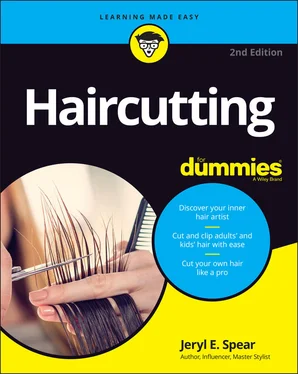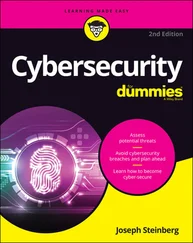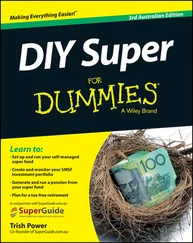Wipe down your scissors after each use with a soft cotton or microfiber cloth.
Put one drop of scissor lubricating oil on the joint of the scissors at the end of each cutting day.
Always protect your scissors against nicks or warping by keeping them safely tucked away in a pouch or case when you aren’t using them.
Avoid cutting hair that’s coated with hair spray, styling aids, or other products that can dull your scissors.
Never cut synthetic hair with your cutting besties; it will dull the blades.
Check your blades periodically to ensure they aren’t too loose or too tight. Loose blades cause the hair to bend as opposed to cutting a clean line; overly tightened blades cause bunching and extra wear on the blades. To make sure that your scissors are properly adjusted, hold them parallel to the floor with the finger ring facing down. Release the finger ring. If your blades open all the way, they are too loose; if they open to within an inch (2.5 centimeters) or so of entirely being open, they are just right.
Have your scissors sharpened any time they’re not cutting like they did when they were fairly new. Send them to a service center recommended by the manufacturer. If you have an inexpensive pair, it’s time to purchase a new tool and use your old pair for practicing your cutting moves on a mannequin head.
Trimmers are a must for cleaning up hairy necks and shortening and shaping mustaches, beards, and sideburns. Trimmers — the petite cousin of larger, more powerful clippers — are meant to crisply trim the edges along the perimeter of the hair, and shape sideburns, beards, and mustaches. See Figure 2-3 for a comparison of trimmers versus clippers.

Style Craft ( www.stylecraftus.com )
FIGURE 2-3:Trimmers versus clippers.
 When people try to use trimmers to do clipper haircuts, chances are excellent that the trimmers will have a mechanical meltdown.
When people try to use trimmers to do clipper haircuts, chances are excellent that the trimmers will have a mechanical meltdown.
Trimmers work better and last longer when you properly maintain them. The maintenance process includes putting two drops of oil across the top of the blade while it’s running (at the end of each cutting day) and keeping debris from building up by frequently removing the blade and brushing away the snippets of hair. (For a more detailed step-by-step on how to maintain your trimmers, check out Chapter 8.)
Clippers are the grown-up version of trimmers. They are used for classic barber cuts, tight blending, or fading techniques, trendy haircuts, and to shorten the perimeter length of one-length hair.
Clippers are popular power tools with stylists, barbers, and home haircutters. Doing clipper cuts is also a specialty skill that deserves its own chapter. Check out Chapter 8to get a good grasp on clipper basics and perform easy tutorials, as well as throughout Part 4.
 Nickel-cadmium (ni-cad) batteries power many cordless trimmers. This type of battery has a memory — if you only partially charge your trimmers most of the time, the battery will eventually only partially charge before you have to recharge it. To prolong the life of your trimmers, completely discharge the battery at least once a month by unplugging the charging base and turning on the trimmer until the battery is completely dead. Then fully recharge it according to the manufacturer’s directions.
Nickel-cadmium (ni-cad) batteries power many cordless trimmers. This type of battery has a memory — if you only partially charge your trimmers most of the time, the battery will eventually only partially charge before you have to recharge it. To prolong the life of your trimmers, completely discharge the battery at least once a month by unplugging the charging base and turning on the trimmer until the battery is completely dead. Then fully recharge it according to the manufacturer’s directions.
You can find these handy machines at nearly all retail stores carrying blow-dryers and curling irons, beauty supply stores, and online. While not all trimmers are created equal — some are more powerful and cut closer to the skin — you can still purchase a fairly decent model for less than $20.
Short List: Tools and Supplies
There’s a good reason why styling stations include several drawers. Haircutting requires some tools and supplies that you need, and a few more that you just want to have around. Table 2-1lists the bare minimum you should have on hand before having your spouse, your little cuties, or your friends sit in your chair.
 In case you’re wondering, some of my extra goodies that aren’t on this list: hand sanitizer, nitrile gloves, scissor oil and a microfiber cloth, breath mints, hand lotion, hand mirror, and an emergency protein bar for when lunch has been scratched in favor of accommodating a friend or family member.
In case you’re wondering, some of my extra goodies that aren’t on this list: hand sanitizer, nitrile gloves, scissor oil and a microfiber cloth, breath mints, hand lotion, hand mirror, and an emergency protein bar for when lunch has been scratched in favor of accommodating a friend or family member.
 Some of the best haircutting towels are waiting for you at the back of your bathroom cupboard. You know the ones: too good to call rags but too worn to hang out in the open. The profile of a perfect home haircutting towel is one that is older, thinner, and lies flat around the neck and shoulders.
Some of the best haircutting towels are waiting for you at the back of your bathroom cupboard. You know the ones: too good to call rags but too worn to hang out in the open. The profile of a perfect home haircutting towel is one that is older, thinner, and lies flat around the neck and shoulders.
TABLE 2-1Tools and Supplies You Need for Home Haircutting
| Tool |
Where You Can Find It |
What It’ll Cost You |
| Haircutting scissors and/or clippers |
Retail stores and beauty stores, and online |
$15 and up |
| Trimmers |
Retail stores, beauty supply stores, and online |
$9 and up |
| Styling/Cutting combs |
Retail stores and beauty supply stores, in person and online |
$1 to $15 |
| Wide tooth/Detangling comb |
Some retail stores, all beauty supply stores, and online |
$1 to $5 |
| Tail comb or pintail comb |
Some retail stores, all beauty supply stores, and online |
$2 to $15 |
| Cutting capes (adult and child) |
Some retail stores, all beauty supply stores, and online |
$5 to $15 |
| Assorted hair clips |
Some retail stores; best choices sold at beauty supply stores in person and online |
$1 to $5 per pack |
| Spray bottle with mist setting |
Most retail stores; best choices are sold at beauty supply stores |
$1.25 to $4 |
| Haircutting/Salon towels |
Sold at beauty supply stores and online; worn-out hand towels work great! |
$1.25 and up each |
| Floor covering (such as newspaper) |
Sold at newsstands, coffee shops, and various stores |
$1+ |
While there’s a dizzying array of combs on the market, most of them are for styling the hair. (Check out Chapter 19and Chapter 20for the lowdown on styling tools preferred by stylists, as well as many ways to make the hair bend to your will.) Table 2-2covers various combs that are useful for prepping and cutting.
 Before purchasing a single comb used for haircuts, collect every comb you have in your house, car, and purse and take them with you when you go on your tool shopping trip. Compare what you have versus what you need. If you’re lucky, you may not have to buy any new combs at all.
Before purchasing a single comb used for haircuts, collect every comb you have in your house, car, and purse and take them with you when you go on your tool shopping trip. Compare what you have versus what you need. If you’re lucky, you may not have to buy any new combs at all.
TABLE 2-2Combs to Cut By
| Type of Comb |
What It’s Used For |
| Styling (cutting) comb |
Most common type of comb for haircutting; excellent tool for teasing, smoothing, and finishing hairstyles |
| Barber comb |
Has tapered teeth; used for clipper cuts |
| Tail comb (optional) |
Used for sectioning when separating the hair; has a plastic tail (thin handle) that comes to a point |
| Pintail comb (optional) |
Same as a tail comb, except it has a thin, metal tail |
 The best quality combs are carbon composite combs — also called carbon fiber combs — that feel like hard rubber. They’re flexible, smooth, heat-resistant, and aren’t prone to broken teeth. In comparison, hard plastic combs — the cheapest category of combs — are inflexible, often feel rough, and have brittle teeth. To save your tender-headed family and friends from haircutting angst, only use top-notch carbon composite combs.
The best quality combs are carbon composite combs — also called carbon fiber combs — that feel like hard rubber. They’re flexible, smooth, heat-resistant, and aren’t prone to broken teeth. In comparison, hard plastic combs — the cheapest category of combs — are inflexible, often feel rough, and have brittle teeth. To save your tender-headed family and friends from haircutting angst, only use top-notch carbon composite combs.
Читать дальше


 When people try to use trimmers to do clipper haircuts, chances are excellent that the trimmers will have a mechanical meltdown.
When people try to use trimmers to do clipper haircuts, chances are excellent that the trimmers will have a mechanical meltdown. Nickel-cadmium (ni-cad) batteries power many cordless trimmers. This type of battery has a memory — if you only partially charge your trimmers most of the time, the battery will eventually only partially charge before you have to recharge it. To prolong the life of your trimmers, completely discharge the battery at least once a month by unplugging the charging base and turning on the trimmer until the battery is completely dead. Then fully recharge it according to the manufacturer’s directions.
Nickel-cadmium (ni-cad) batteries power many cordless trimmers. This type of battery has a memory — if you only partially charge your trimmers most of the time, the battery will eventually only partially charge before you have to recharge it. To prolong the life of your trimmers, completely discharge the battery at least once a month by unplugging the charging base and turning on the trimmer until the battery is completely dead. Then fully recharge it according to the manufacturer’s directions. In case you’re wondering, some of my extra goodies that aren’t on this list: hand sanitizer, nitrile gloves, scissor oil and a microfiber cloth, breath mints, hand lotion, hand mirror, and an emergency protein bar for when lunch has been scratched in favor of accommodating a friend or family member.
In case you’re wondering, some of my extra goodies that aren’t on this list: hand sanitizer, nitrile gloves, scissor oil and a microfiber cloth, breath mints, hand lotion, hand mirror, and an emergency protein bar for when lunch has been scratched in favor of accommodating a friend or family member. The best quality combs are carbon composite combs — also called carbon fiber combs — that feel like hard rubber. They’re flexible, smooth, heat-resistant, and aren’t prone to broken teeth. In comparison, hard plastic combs — the cheapest category of combs — are inflexible, often feel rough, and have brittle teeth. To save your tender-headed family and friends from haircutting angst, only use top-notch carbon composite combs.
The best quality combs are carbon composite combs — also called carbon fiber combs — that feel like hard rubber. They’re flexible, smooth, heat-resistant, and aren’t prone to broken teeth. In comparison, hard plastic combs — the cheapest category of combs — are inflexible, often feel rough, and have brittle teeth. To save your tender-headed family and friends from haircutting angst, only use top-notch carbon composite combs.










